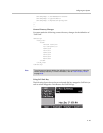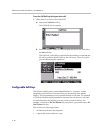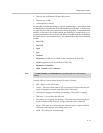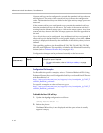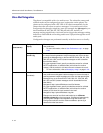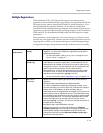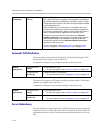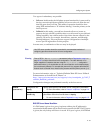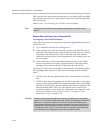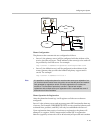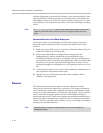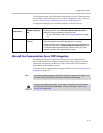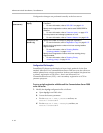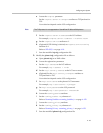
Configuring Your System
4 - 57
Two types of redundancy are possible:
•Fail-over: In this mode, the full phone system functionality is preserved by
having a second equivalent capability call server take over from the one
that has gone down/off-line. This mode of operation should be done
using DNS mechanisms or “IP Address Moving” from the primary to the
back-up server.
• Fallback: In this mode, a second less featured call server (router or
gateway device) with SIP capability takes over call control to provide basic
calling capability, but without some of the richer features offered by the
primary call server (for example, shared lines, presence, and Message
Waiting Indicator). Polycom phones support configuration of multiple
servers per SIP registration for this purpose.
In some cases, a combination of the two may be deployed.
For more information, refer to “Technical Bulletin 5844: SIP Server Fallback
Enhancements on SoundPoint IP Phones” at
http://www.polycom.com/usa/en/support/voice/soundpoint_ip/VoIP_T
echnical_Bulletins_pub.html .
Configuration changes can performed centrally at the boot server:
DNS SIP Server Name Resolution
If a DNS name is given for a proxy/registrar address, the IP address(es)
associated with that name will be discovered as specified in RFC 3263. If a port
is given, the only lookup will be an A record. If no port is given, NAPTR and
Note
Your SIP server provider should be consulted for recommended methods of
configuring phones and servers for fail-over configuration.
Warning
Prior to SIP 2.1, the
reg.x.server.y
parameters (refer to Registration <reg/> on
page A-107) could be used for fail-over configuration. The older behavior is no
longer supported. Customers that are using the
reg.x.server.y
. configuration
parameters where y>=2 should take care to ensure that their current deployments
are not adversely affected. For example the phone will only support advanced SIP
features such as shared lines, missed calls, presence with the primary server (y=1).
Central
(boot server)
Configuration file:
sip.cfg
Specify global primary and fallback server configuration parameters.
• For more information, refer to Protocol <voIpProt/> on page A-6.
Configuration file:
phone1.cfg
Specify per registration primary and fallback server configuration
parameters values that override those in sip.cfg.
• For more information, refer to Registration <reg/> on page A-107.



